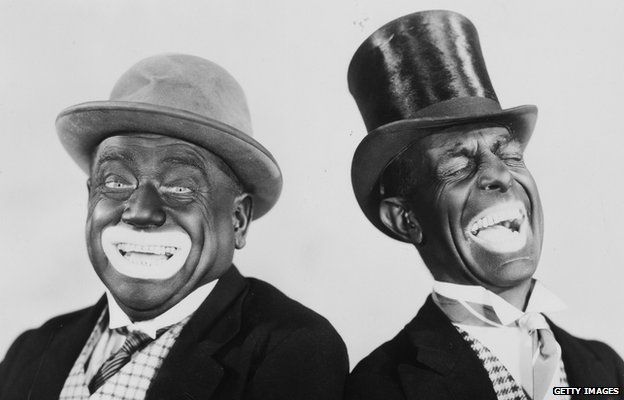In the 1950 Howdy Doody comic No.6, one of the stories titled "Adventurers Club" from Dell Comics show friends Howdy Doody and Dilly Dally overhear an offer being made to whoever can produce the most unusual creature of the year, and decided to go on a voyage to the Golly-Wolly Islands to discover it. Unfortunately, the captain of the ship brings Howdy and Dilly to the wrong island, which is inhabited by cannibals.The issue (pun intended) with this comic is mostly the cultural priorities that are outlined in the Comic Code Authority of 1954 go into detail about what is unacceptable for the public to be reading, however, when addressing racism or things of the like, it is one vague blanket statement that reads “Ridicule or attack on any [...] racial group is never permissible.” But the content present in the Howdy Doody comic doesn’t necessarily identify a racial group, but creates one within the Howdy Doody universe which depicts islanders as more animalistic than human. Granted, the Comic Code Authority of 1954 was outlined four years after the publication of this Howdy Doody comic, but the real underlying issues are not fixed to the extent that other issues, like keeping the sanctity of marriage or prohibiting the use of the words “Horror,” “Crime,” and “Terror.”

 The comic does not explicitly identify the ethnicity and/or race of the islanders of “Golly-Wolly Island” but seem to still perpetuate gross stereotypes of non-western island peoples. There are plenty of examples of this shown within the comic. First, we can see a form of black-face in how the islanders are stylistically drawn with overly wide and large lips. They seem to take up most of the islanders faces. This is similar to how black-face was used in Minstrel shows. The hair and costume of the islanders is primal, with the use of bones and various piercings as accessories. The islanders are also cannibals, as to add to the already animalistic characteristics they were given, they also seem to be not as smart as Howdy and Dilly, the main characters whose stupidity is the main focus of the comic series.
The comic does not explicitly identify the ethnicity and/or race of the islanders of “Golly-Wolly Island” but seem to still perpetuate gross stereotypes of non-western island peoples. There are plenty of examples of this shown within the comic. First, we can see a form of black-face in how the islanders are stylistically drawn with overly wide and large lips. They seem to take up most of the islanders faces. This is similar to how black-face was used in Minstrel shows. The hair and costume of the islanders is primal, with the use of bones and various piercings as accessories. The islanders are also cannibals, as to add to the already animalistic characteristics they were given, they also seem to be not as smart as Howdy and Dilly, the main characters whose stupidity is the main focus of the comic series.Popular culture has a role in perpetuating these stereotypes, especially in these comics. They seem light-hearted and for satire, but even comic books depicting dark-skinned, misshapen bodies in contrast with the white men and women depicted in all of the comics create a harmful divide between “us” and “them.”

No comments:
Post a Comment